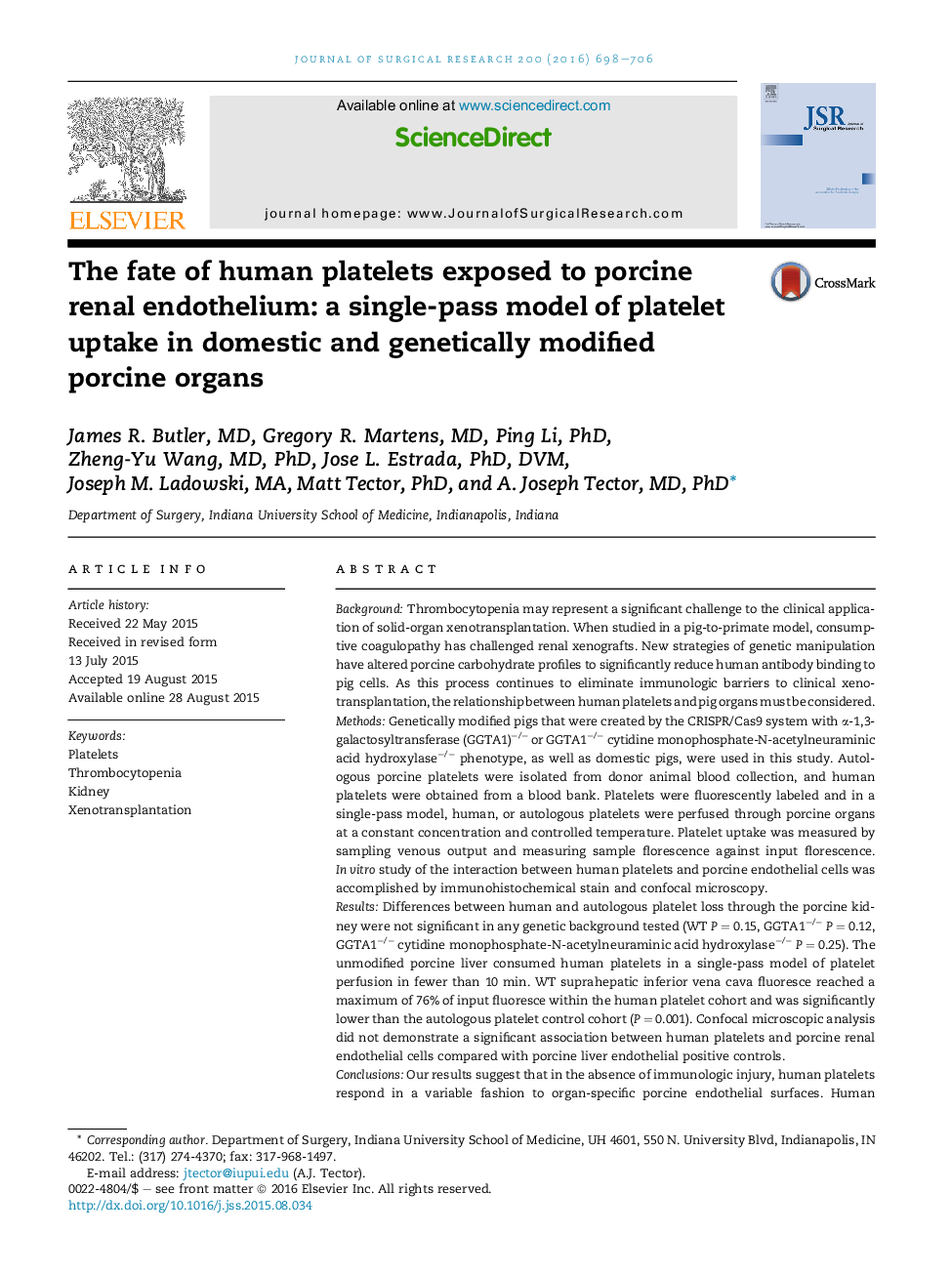| کد مقاله | کد نشریه | سال انتشار | مقاله انگلیسی | نسخه تمام متن |
|---|---|---|---|---|
| 6253442 | 1612526 | 2016 | 9 صفحه PDF | دانلود رایگان |
BackgroundThrombocytopenia may represent a significant challenge to the clinical application of solid-organ xenotransplantation. When studied in a pig-to-primate model, consumptive coagulopathy has challenged renal xenografts. New strategies of genetic manipulation have altered porcine carbohydrate profiles to significantly reduce human antibody binding to pig cells. As this process continues to eliminate immunologic barriers to clinical xenotransplantation, the relationship between human platelets and pig organs must be considered.MethodsGenetically modified pigs that were created by the CRISPR/Cas9 system with α-1,3-galactosyltransferase (GGTA1)â/â or GGTA1â/â cytidine monophosphate-N-acetylneuraminic acid hydroxylaseâ/â phenotype, as well as domestic pigs, were used in this study. Autologous porcine platelets were isolated from donor animal blood collection, and human platelets were obtained from a blood bank. Platelets were fluorescently labeled and in a single-pass model, human, or autologous platelets were perfused through porcine organs at a constant concentration and controlled temperature. Platelet uptake was measured by sampling venous output and measuring sample florescence against input florescence. In vitro study of the interaction between human platelets and porcine endothelial cells was accomplished by immunohistochemical stain and confocal microscopy.ResultsDifferences between human and autologous platelet loss through the porcine kidney were not significant in any genetic background tested (WT P = 0.15, GGTA1â/âP = 0.12, GGTA1â/â cytidine monophosphate-N-acetylneuraminic acid hydroxylaseâ/âP = 0.25). The unmodified porcine liver consumed human platelets in a single-pass model of platelet perfusion in fewer than 10 min. WT suprahepatic inferior vena cava fluoresce reached a maximum of 76% of input fluoresce within the human platelet cohort and was significantly lower than the autologous platelet control cohort (P = 0.001). Confocal microscopic analysis did not demonstrate a significant association between human platelets and porcine renal endothelial cells compared with porcine liver endothelial positive controls.ConclusionsOur results suggest that in the absence of immunologic injury, human platelets respond in a variable fashion to organ-specific porcine endothelial surfaces. Human platelets are not removed from circulation by exposure to porcine renal endothelium but are removed by unmodified porcine hepatic endothelium. Kidneys possessing genetic modifications currently relevant to clinical xenotransplantation failed to consume human platelets in an isolated single-pass model. Human platelets did not exhibit significant binding to renal endothelial cells by in vitro assay.
Journal: Journal of Surgical Research - Volume 200, Issue 2, February 2016, Pages 698-706
